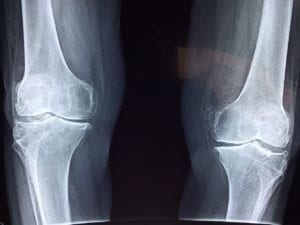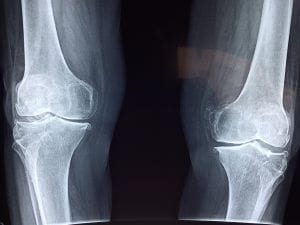Osteosarcoma
What is osteosarcoma?
Osteosarcoma, also known as osteogenic sarcoma, is a type of cancer that manifests in the bones, usually in areas where the bone is growing quickly (femur near the knee, upper arm bone, shinbone, etc.) and usually during growth spurts in teens. Though rare, osteosarcoma is the most common type of cancer that develops in the bone, especially in children and is more prominent in boys than in girls. Osteosarcoma can be classified as either localized or metastatic, and it is staged in the same way as other tumors.What causes osteosarcoma?
The exact cause of osteosarcoma remains largely unknown. In some cases, the disease runs in families, and at least one gene, which is also associated with familial retinoblastoma, has been linked to an increased risk of developing osteosarcoma.What are the symptoms of osteosarcoma?
The symptoms of osteosarcoma vary depending on the location of the tumor, but some of the common symptoms are as follows:- Bone pain that may mimic growing pains
- Bone fractures
- Swelling
- Redness
- Limping or limitation of joint motion
How is osteosarcoma diagnosed?
First, a healthcare provider will conduct a physical examination to look for swelling and redness and make note of any relevant medical history. A simple blood test can then be done to check for tumor markers that will indicate the presence of cancer. The following tests can also be used to diagnose osteosarcoma:- CT scan
- MRI
- X-ray
- PET scan
- Biopsy or bone scan
What are the available treatments for osteosarcoma?
Surgery and chemotherapy are the two treatments most effective for osteosarcoma. Chemotherapy is usually given before a removal surgery to shrink the tumor and kill any other cancer cells that have spread to other parts of the body. Afterwards, surgery is used to remove any of the remaining tumor. Usually, surgery can still save the affected limb, though in rare cases, an amputation may be necessary.Where can I find more information on osteosarcoma?
Osteosarcoma Articles

A Rare Disease Charity Organization is Raising the Bar for Osteosarcoma Support
Kathy Devanny
May 21, 2025
Read More »


In Her 9th Osteosarcoma Relapse, This Young Woman Continues to Fight
Jessica Lynn
August 22, 2023
Read More »



Former Badgers Player Walt McGrory Discusses Osteosarcoma Journey
Jessica Lynn
April 26, 2023
Read More »

An Expandable Prosthesis Has Helped a Boy with Osteosarcoma Gain Freedom
Jessica Lynn
February 10, 2023
Read More »




